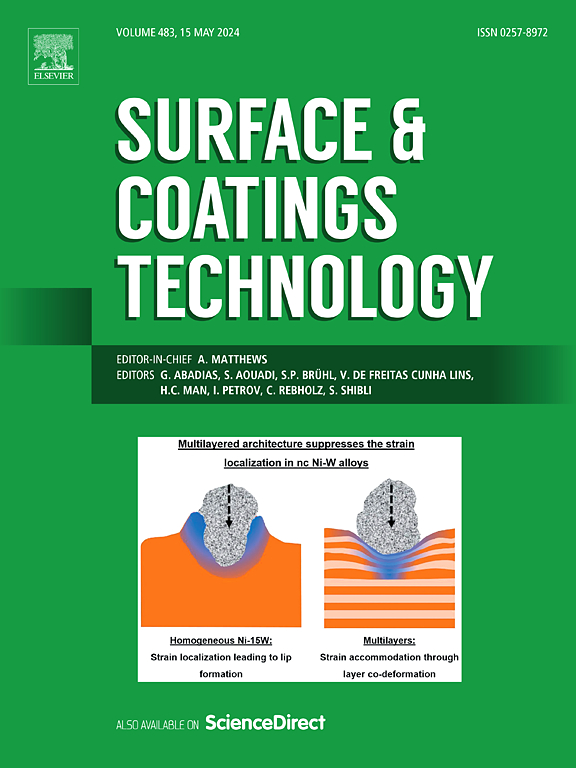等离子体电解氧化改性3D打印TiZrNb钛合金表面
IF 6.1
2区 材料科学
Q1 MATERIALS SCIENCE, COATINGS & FILMS
引用次数: 0
摘要
种植领域正在迅速发展,这需要研究人员寻找新的个性化解决方案。随着医学扫描方法的改进,与3D打印材料科学有了联系。虽然传统制造的植入物的表面处理被广泛研究,但本研究的重点是分析3D打印钛合金的表面。对样品进行等离子体电解氧化(PEO)、扫描电镜(SEM)、能量色散x射线显微镜(EDX)、润湿性、x射线光电子能谱(XPS)、横截面、拉曼和生物试验分析。在处理后的材料表面形成由氧化钛、氧化锆和氧化铌组成的氧化涂层。这些涂层富含钙、磷酸盐和胺基。表面的润湿性不同,这并不影响它们的生物活性。结果表明,虽然两组样品的PEO条件略有不同,但它们具有相似的表面,这使得3d打印合金成为植入物使用的有前途的材料。本文章由计算机程序翻译,如有差异,请以英文原文为准。

Modification of 3D printed TiZrNb titanium alloy surface via plasma electrolytic oxidation
The implantology field is rapidly developing, which requires researchers to search for new personalized solutions. With the improvement of scanning methods in medicine, there is a connection to the science of 3D printed materials. While the surface treatment of conventionally made implants is widely researched, this study focuses on analyzing the surface of a 3D printed titanium alloy. The samples were subjected to plasma electrolytic oxidation (PEO) and subjected to scanning electron microscopy (SEM), energy dispersive X-ray microscopy (EDX), wettability, X-ray photoelectron spectroscopy (XPS), cross section, Raman, and biological trials analysis. Oxide coatings composed of titanium oxide, zirconium oxide, and niobium oxide were formed on the surfaces of the treated materials. These coatings were enriched with calcium, phosphate, and amine groups. The surfaces differed in wettability, which did not affect their bioactivity. The results suggest that while the conditions of the PEO are slightly different for both groups of samples, they present with similar surfaces, which makes the 3D-printed alloy a promising material for implant use.
求助全文
通过发布文献求助,成功后即可免费获取论文全文。
去求助
来源期刊

Surface & Coatings Technology
工程技术-材料科学:膜
CiteScore
10.00
自引率
11.10%
发文量
921
审稿时长
19 days
期刊介绍:
Surface and Coatings Technology is an international archival journal publishing scientific papers on significant developments in surface and interface engineering to modify and improve the surface properties of materials for protection in demanding contact conditions or aggressive environments, or for enhanced functional performance. Contributions range from original scientific articles concerned with fundamental and applied aspects of research or direct applications of metallic, inorganic, organic and composite coatings, to invited reviews of current technology in specific areas. Papers submitted to this journal are expected to be in line with the following aspects in processes, and properties/performance:
A. Processes: Physical and chemical vapour deposition techniques, thermal and plasma spraying, surface modification by directed energy techniques such as ion, electron and laser beams, thermo-chemical treatment, wet chemical and electrochemical processes such as plating, sol-gel coating, anodization, plasma electrolytic oxidation, etc., but excluding painting.
B. Properties/performance: friction performance, wear resistance (e.g., abrasion, erosion, fretting, etc), corrosion and oxidation resistance, thermal protection, diffusion resistance, hydrophilicity/hydrophobicity, and properties relevant to smart materials behaviour and enhanced multifunctional performance for environmental, energy and medical applications, but excluding device aspects.
 求助内容:
求助内容: 应助结果提醒方式:
应助结果提醒方式:


